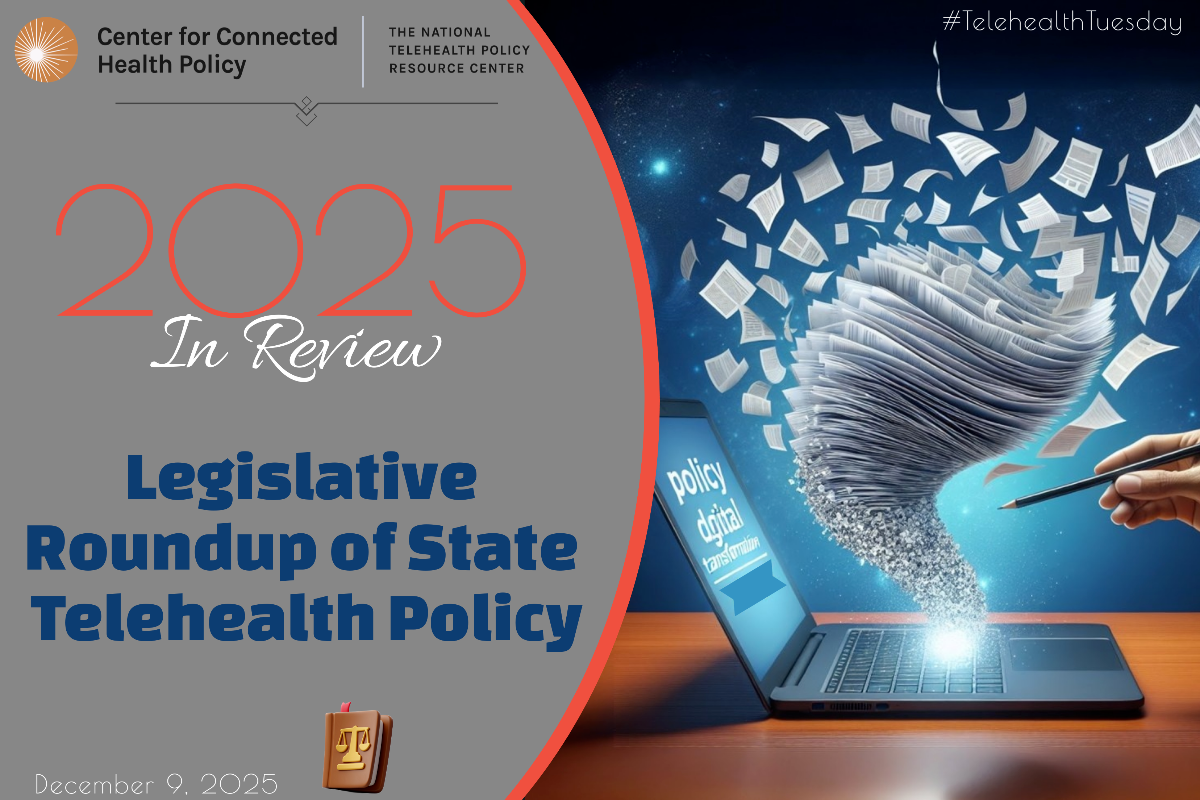2025 IN REVIEW: State Telehealth Policy… it’s the Legislative Roundup!

As 2025 nears its end, the Center for Connected Health Policy (CCHP) is releasing its annual roundup of state telehealth legislation. This year, states continued refining telehealth policy across multiple areas, including Medicaid coverage, private payer requirements, licensure, prescribing, and professional practice standards. Increased attention to remote patient monitoring, clearer parameters for when audio-only is appropriate, data transparency, and artificial intelligence reflects a shift toward more detailed and clearly defined telehealth frameworks.




